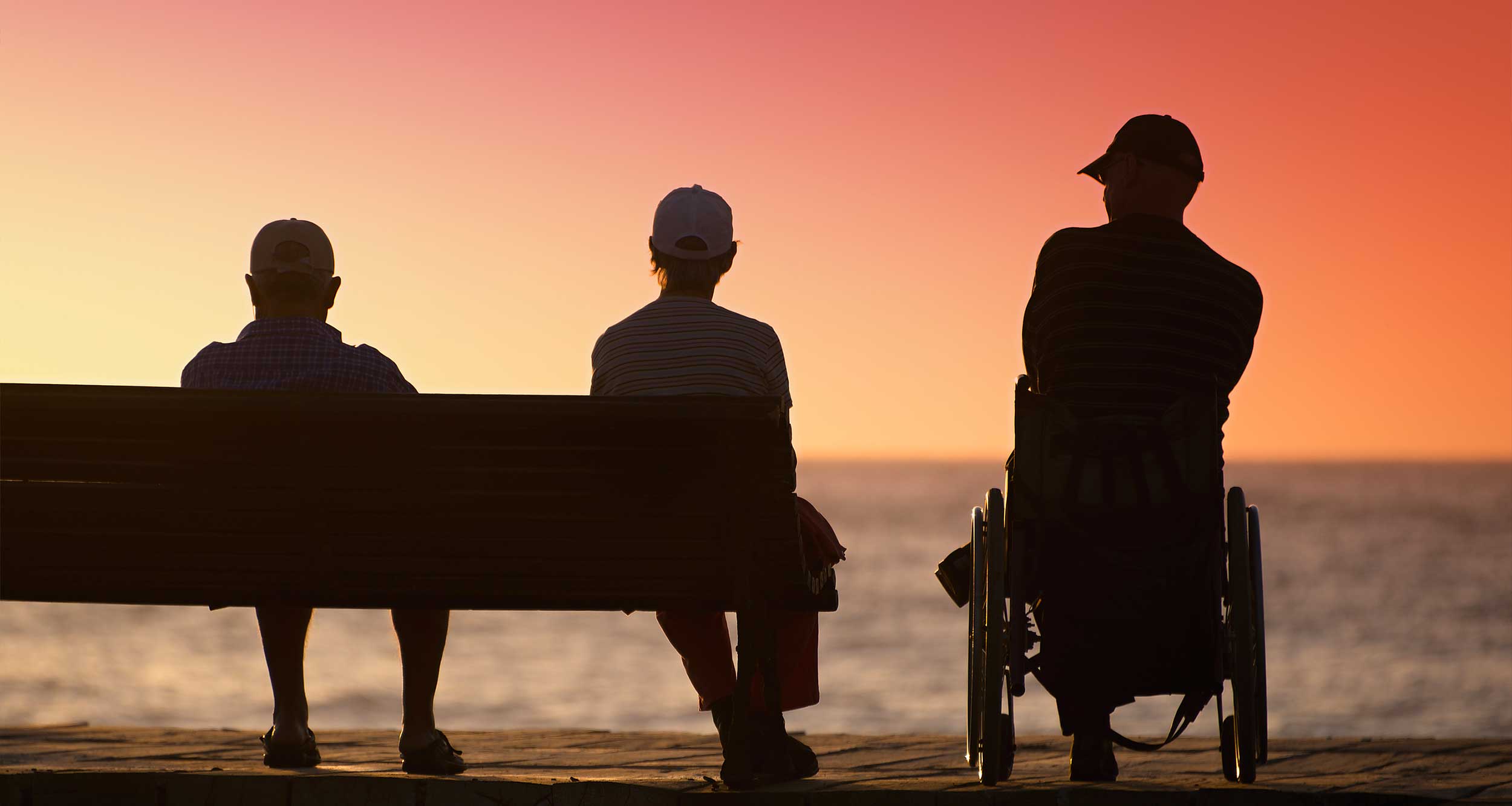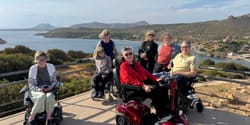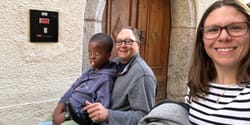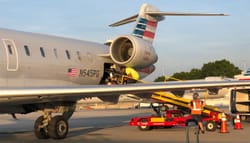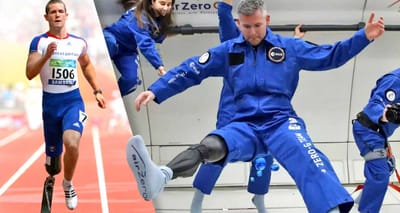With the coronavirus pandemic still raging through the United States and around the world, the travel industry expects a slow recovery. With countless destinations closed to tourism, hotels at record-low occupancy and many travel businesses shuttered, there is an opportunity to reimagine what travel will, could and should look like in a post-pandemic world.
Earlier this year, I began a study of Wheelchair Travel readers to better understand their needs, preferences and expectations for travel. This report is the product of that study; it provides insights that can be used to make the travel industry more welcoming to disabled people — a group that includes approximately 1 in 4 Americans — the largest minority group both in the United States and around the world.
The Accessible Travel Study Group
The 2020 Accessible Travel Study was focused on readers of this website – people who tend to have mobility challenges and who have demonstrated an interest in accessible travel, even if they have not yet taken that first trip. The study group consisted of approximately 700 adults from all age groups, spreading a wide net across the various economic, nationality, racial and ethnic groups, and it is believed to be one of the most diverse groups included in an accessible travel study to date.
Although survey participants came primarily from the United States (76%), 31 total nationalities were represented and respondents came from six continents. 64% were women and 35% were men.
ECONOMIC STATUS
The accessible travel market is enormous, measured in the billions of dollars per year. Disabled people belong to every economic group, meaning there is a need for accessibility at every level — from the European hostel to the 5-star luxury hotel in New York City. To better understand the economic breakdown of the accessible travel industry, the following chart indicates the annual household income of the study group.
According to the U.S. Census Bureau, the median annual household income was $68,703 in 2019. The data collected in this study suggests that disabled travelers are roughly on par with their nondisabled peers with respect to annual income, making the market segment a prime opportunity for the travel industry.
TYPES OF DISABILITY
Although “wheelchair” is in the WheelchairTravel.org name, the website’s readership consists of a diverse group experiencing and adapting to many different conditions. We asked readers to indicate whether they…
- Use a wheelchair or scooter full-time. — 68%
- Use a wheelchair or scooter occasionally. — 23%
- Use a walker, rollator, crutches or cane to aid mobility some or all of the time. — 29%
- Use prosthetic devices some or all of the time. — 3%
Not all disabilities impact mobility. Approximately 4% of respondents reported that they are deaf or hard-of-hearing and 1% of readers are legally blind.
Nondisabled Readers
Although 89% of the readers surveyed identified as having one or more forms of disability, the audience served by WheelchairTravel.org includes many nondisabled people as well. The website is used by those people to plan trips for friends and family members, large numbers of whom have physical, intellectual, sensory or developmental disabilities.
Also interesting to note is that 10% of nondisabled readers work in the travel industry — a group that we are of course delighted to welcome.
Travel patterns of people with accessibility needs
How often and for how long do disabled people travel? This was a central question that we hoped to answer in this study, and the results were surprising.
More than 90% of those surveyed take at least one trip per year, with a whopping 39% traveling three or more times per year for vacation or leisure. 18% of respondents who traveled for vacation or leisure also reported traveling overnight at least once a year for business purposes.
Trip length
Hotel occupancy is a strong indicator of the amount of time travelers spend away from home, so that was an important data point to consider in this study.
We found that, of those who do travel more than 150 miles from home for vacation or leisure at least once per year, an average of 12.4 nights are spent in hotel rooms each year on average. In a 2017 survey of U.S. travelers, 71% of respondents reported spending fewer than 7 nights per year in hotels. This disparity supports the widely-held notion that disabled people tend to extend the length of their trips, perhaps by up to twice as long.
Although only a small percentage of disabled respondents — less than 6% — reported traveling overnight for business purposes at least once per year, that group consumed an average of 14 nights in hotel rooms each year while traveling for work.
Where are disabled people traveling?
Because the study group consisted of disabled people from around the world, we collected some interesting data points concerning the likelihood of disabled people to travel abroad and their preferred destinations.
Europeans were the most likely to travel abroad, presumably due to the relative ease of travel between countries in the Schengen Area. Of the Europeans who reported traveling to another European country, 13% also reported traveling to another continent within the last three years.
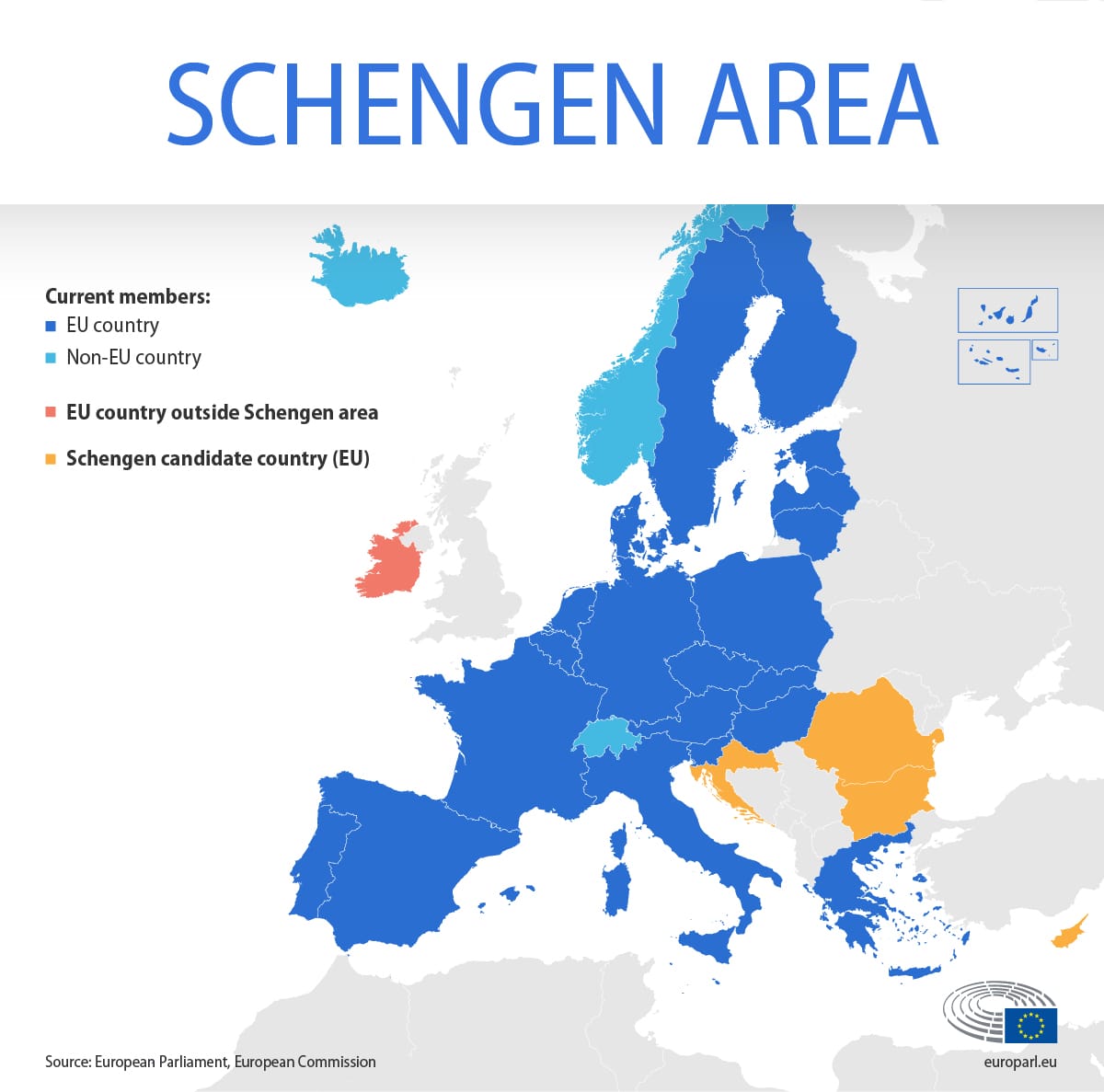
People living on the North American continent were the second most likely to travel abroad, with a preference for the Caribbean and/or Mexico and Europe. Wheelchair users living in the United States reported traveling to the Caribbean and/or Mexico more than any other nationality, by a 4-to-1 margin, likely due to the widespread availability of cruises between the two regions.
Not surprisingly, Africa and Australia were the least visited continents, with Europeans the most likely to visit Africa and Asians the most likely to visit Australia.
Accessibility is a key consideration in selecting a travel destination.
Disabled people prefer two visit places that are accessible to them. It seems like a no-brainer, but we needed to provide it.
When asked to identify which factors most influenced their decision to visit a particular destination, 50% said accessibility was the most important factor. 81% rated accessibility to be either “important” or “most important.”
Later in this report, we’ll take a look at how destinations can be more welcoming of disabled visitors, even if the city, state or country is not the most accessible.
Hotel accessibility must improve.
As has been documented on this website countless times (here, here, here, here and here), hotel accessibility is not where it needs to be. Wherever you turn, senseless barriers have been erected, making it difficult for disabled people to find accommodation that will meet their accessibility needs.
In the course of this study, participants were asked to identify which were their most important considerations in selecting a hotel.
More than 79 percent of participants identified bathroom accessibility as a “most important” factor in their selection of hotel. By following the ADA Design Standards for Hotels, places of lodging will be better equipped to attract disabled customers.
Bed height is a common concern for disabled travelers, with wheelchair users in particular citing past difficulties with beds that were either too tall, or which lacked clear floor space under the bed to accommodate a patient transfer lift. In the United States, the Access Board has declined to set a standard for bed height, for reasons described in our 2019 article. We asked participants in our study to identify bed heights that they could utilize.
Due to the wide variation in types of disability and the physical ability of individuals, there is no single bed height that is accessible even to a majority of disabled guests. Due to the challenges presented by beds that are either too high or too low, it is critical that hotels disclose the measurements online so that customers can choose the hotel that best meets their needs.
Accessibility is not limited to the physical environment. Given the importance of accessible room features to disabled guests, detailed information about accessible room types should be provided on hotel websites. Unfortunately, survey respondents reported that this information is rarely sufficient.
More than 88% of respondents reported that the accessibility information provided by hotels is insufficient, a reality that often leaves travelers disappointed or unable to make full use of the facilities. By providing detailed and accurate information about the state of a property’s accessibility, hotels can ensure that the guest’s expectations align with the room they will actually receive.
Accessibility is important across the price spectrum, as disabled travelers book rooms at budget, midscale and luxury hotels.
On average, 89% of disabled travelers in this study spend more than $100 per night on hotel accommodation, while more than 45% stay at hotels priced at $150 per night or more.
Disabled travelers lack confidence in air travel.
Approximately 85% of study participants reported having taken at least one flight with their disability, with 79% taking at least one round-trip each year. Delta Air Lines, American Airlines and Southwest Airlines were the top three most frequently utilized airlines for these journeys. 46% of respondents had taken at least one trip with a non-U.S. carrier such as Air Canada, British Airways, China Airlines or others.
In asking travelers to assign a letter grade to the quality of assistance provided when getting on and off the airplane, the results were striking.
When asking the group if they believed airline assistance staff have been properly trained to help disabled passengers on and off the airplane (and to their seats), only 31% said yes — matching the number who had given an A or B rating to the quality of that assistance.
There appears to be a significant opportunity for airlines to improve the quality of services offered to disabled passengers — improvements that could generate greater customer satisfaction and elevated interest in long-distance travel.
Where is the welcome mat?
WheelchairTravel.org exists because destinations, hotels, airlines, attractions and other businesses have failed to lay out a welcome mat for disabled travelers.
Most CVB and DMO websites lack an accessible landing page — a place for would-be travelers to find information about a destination’s accessibility. As a member of the TravelAbility Summit‘s Advisory Board, I have been able to participate in the new Accessible Landing Page Project that aims to encourage destinations to put their best foot forward in attracting disabled visitors. In this study, respondents were asked to identify the importance of specific types of information that are commonly provided in destination accessibility guides.
Although DMO and CVB websites traditionally cover such topics, they do not consider the accessibility of those businesses or travel services. When destinations and local governments fail to provide trusted accessible travel information, would-be travelers turn to other sources, including websites like WheelchairTravel.org. The search for information is critical, and 75% of those surveyed reported using this website for its accessible travel guides.
When respondents were asked which accessible travel information sources they found to be most trustworthy, the results were startling.
Although this result was certainly subject to some bias, 82% of those surveyed find accessible travel websites like this one to be the most trustworthy sources of disabled travel information. Such websites provide detailed accounts of accessibility with photo and/or video evidence that few other sources provide. Websites like WheelchairTravel.org can serve as a model to destinations interested in producing content for disabled visitors.
Disability representation in marketing
Many members of the disability community have adopted the slogan “nothing about us without us” to decry a general lack of inclusion across society, but particularly with regard to a lack of representation in the media. I wanted to know if the travel industry is doing any better, so I asked the study group if, in the past 12 months, they had seen a disabled person in any advertisements from the hotel or airline industries — two of the largest drivers of travel-related advertising.
With only 7% acknowledging that they had seen disability representation in travel advertising, there is a clear opportunity for destinations and businesses alike to place increased focus on people with disabilities. With more than 1 in 4 Americans having at least one form of disability, it is a significantly larger consumer group than the typical “niche” market segment.
It’s not just disabled travelers… it’s their friends and family too!
I am disabled and travel solo most of the time, but that isn’t typical of the participants in this study. Most disabled people travel with at least one other person, and oftentimes with a much larger group.
According to the data collected, 87% of disabled people travel with at least one other person. This is a significant opportunity for businesses and destinations to increase the return on investments in accessibility.
Impact of the coronavirus pandemic on disabled travel
The coronavirus pandemic has caused significant disruption to the travel industry, with many travelers concerned about their safety and many governments restricting inbound tourism. Based on data from the CDC, older people and those with disabilities are at higher risk for serious complications or even death as a result of COVID-19. We wanted to know how the Wheelchair Travel community felt about travel during this time, and we asked the following questions about the COVID-19 pandemic.
TAKING INTO ACCOUNT YOUR AGE, DISABILITY STATUS, HEALTH, FITNESS AND OVERALL MEDICAL PROFILE, HOW WOULD YOU RATE YOUR RISK FOR SERIOUS COMPLICATIONS DUE TO THE CORONAVIRUS?
With only 10% of Wheelchair Travel readers considering themselves to be low risk, it is obvious that coronavirus is seen as a clear and present danger by the disability community.
At the time the study was conducted, 46% of respondents said they would be unwilling to travel until a vaccine is available. Only 14% were willing to travel at the time, but that number may have decreased given the recent increase in coronavirus cases in the United States and elsewhere.
“Build it and they will come”
This is a popular phrase, derived from the 1989 movie Field of Dreams.
“Build it and they will come” is a central concept in WheelchairTravel.org’s view on accessibility — if a business, product or service is not accessible, disabled people may not be able to come. By investing in accessibility and publishing clear information about what travelers should expect, the door can be opened to disabled people and the massive (largely untapped) market for accessible travel.
This study was comprised of individuals who, for the most part, already possess some experience in traveling with a disability. Their insights (and frustrations) should be seen as an opportunity to rethink the delivery of travel products to a market segment with tremendous growth potential. It can and should be done!
An addendum to this report will be published in the near future, which will contain additional comments made by study participants. Although the comments are not quantitative in nature, they can provide additional insight in understanding this long underserved group of travelers.

